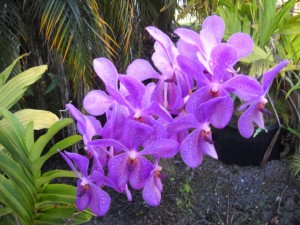Orchid Care
 Caring for Orchids
Caring for Orchids
Do you know how to care for your orchids? If you don’t follow these guidelines, you may be risking the life of your orchid plant.
Orchids are one of the most popular plants in the whole wide world and there are hundreds of various varieties of orchid plants. But despite the diversity found in this incredible family of plants, there are a few general guidelines that you should follow regardless of the species of orchid that you are growing. Ignore them at your peril.
Orchid Care Rules
Adhere to these guidelines to help keep your plant in good health. In the event you do not follow these rules, you might harm or perhaps kill your orchid plant.
- Never pot an orchid in regular soil, use orchid potting mix.
- Never let your orchid stay inside a water soaked pot; make sure that the pot drains well.
- When you do water, make certain you use sufficient water that it drains out from the bottom from the pot to prevent a build up of salts.
- Don’t over-fertilize your orchid. Follow the directions on the fertilizer label.
- Watch for pests and remove them by hand or wipe them off having a soft cloth.
- Ensure adequate space in between your plants to stop the spread of orchid diseases between them.
 Watering: More Important Than You Think
Watering: More Important Than You Think
Orchids should not be watered too often or you will run the risk of encountering root rot or fungal illnesses. In general, watering once a week is sufficient. You will need to let the media that your orchid is growing in dry in between waterings and you should by no means soak your orchid in water. Its roots need to breathe, so submersing them in water can harm or even kill your plant. You must also mist the leaves and aerial roots of your plant periodically if you live inside a dry area, but avoid getting water on your orchid’s flowers as this can make them rot.
Air Circulation: An Orchid Has to Breathe
Great air circulation is absolutely critical to the well being of your orchid. A frequent cause of fungal infections is poor air circulation. What happens is the air stagnates and water on your plant’s stem and leaves does not dry off as it ought to. When this happens, all sorts of harmful fungus and pests can start to grow and kill your plant.
Temperature: Some Like it Hot
Most orchids favor temperatures in between 65 and 85 degrees. Attempt to help keep them from getting too hot or cold as this can harm or perhaps kill them. They are able to survive brief exposures to temperatures which are outside of this range, but attempt to avoid taking that risk. In the event you do reside in a colder area, attempt to focus on Cymbidium orchids as they are able to withstand colder weather than other varieties of orchids.
Fertilizing: Feeding a Hungry Orchid
Generally you should fertilize your orchid just as it is about to enter its growing season. The growing season starts in the Spring and usually extends to the Fall. As your orchid is growing, its nutritional requirement goes up and so this is the perfect time to feed it. Just look for a fertilizer that is designed for orchids and follow the directions on the label.
Repotting an Orchid
From time to time orchids will need to be repotted, but please bear in mind that the time to repot is often significantly later than many people believe that it is. Orchids appreciate slightly smaller pots than other plants and they also enjoy being slightly root bound, so wait to repot till they’re clearly too big for the pot that they are in. Because there are a lot of orchid lovers out there, most garden shops sell potting mix that’s specially created for orchids. Simply buy orchid potting mix and a slightly bigger pot and repot your orchid in it, using the new potting mix.

